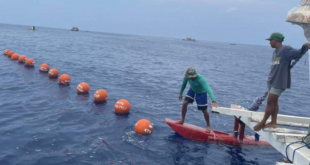
Although it was an unwanted public health emergency that left a deep scar in our national consciousness, the Covid-19 pandemic may be seen in a more positive light for instilling in the minds of our leaders and the general public the importance of an adequate and reliable food supply chain.
The pandemic truncated the supply chains of the world’s basic necessities—food, oil, fertilizer and other farm inputs, electronics—so that countries which are not producing these products or producing them in limited quantities suffered the most. The Philippines which is a net importer of rice, sugar, onion, and other food items was hit the hardest.
The food supply chain (FSC) consists of a series of activities elaborating how a product intended for human consumption and nutrition is produced and delivered to the final consumers. At each stage of the chain, values are added to the product by each player in the FSC such as farmers, transport operators, processors, distributors and retailers.
The supply chain, not only of food but also of other basic items, is important because an efficient system enables consumers to buy essential products at lower costs, and be assured of the quality of these commodities.
Sifting practical lessons from the two recent supply chain breakers of the global economy, the Covid-19 pandemic and the Ukraine-Russia war, President Ferdinand R. Marcos Jr. directed several departments early in his term to craft a three-year Food Logistics Action Agenda aimed at revolutionizing the country’s food distribution system.
The creation of the three-year food logistics agenda was one of the directives of the President during the eighth Cabinet meeting in September 2022 to the Departments of Agriculture, Trade and Industry, Transportation, Public Works and Highways, Information and Communications Technology, and the Interior and Local Government to develop a food logistics chain, cold chain industry, ports infrastructure, and farm-to-market roads.
The Presidential Communications Office said the action plan’s general objective is to ensure the availability, accessibility, and affordability of food for Filipinos and that consumers reliably get the right product at the right time.
The plan is committed to a whole-of-government approach where key agencies involved shall be required to prioritize, focus, and allocate funding on specific initiatives. It also seeks to tighten enforcement against hoarding, smuggling, and overstaying food imports, monitoring warehouses or cold storage facilities, and using information and communications technology to improve logistics performance.
The Department of Trade and Industry, meanwhile, has outlined efforts to integrate food terminals into the logistics framework by upgrading existing food terminals and building additional food hubs in Metro Manila and other areas in the country.
“By integrating food terminals, the supply chain from producers to consumers could be shortened, with standardized logistical processes and transportation systems directed towards specific destinations,” it said.
Since the food logistics agenda was approved by the President last August 29, we can expect the government to begin implementing it in earnest in the next few weeks.
These officials can tout efficient supply and demand management, resilient value and supply chains operation and well-placed food hubs, but we consider the no-nonsense campaign against the twin menace of smuggling and hoarding of agricultural and food products as the most important cog in this three-year food logistics wheel.
The government must not fail in its anti-smuggling campaign or the whole logistics program will not run as planned.
*****
Credit belongs to: www.mb.com.ph
 Atin Ito First Filipino Community Newspaper in Ontario
Atin Ito First Filipino Community Newspaper in Ontario






